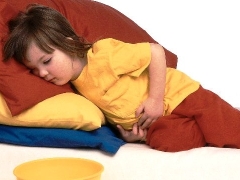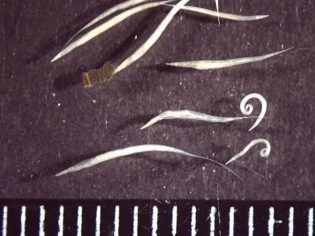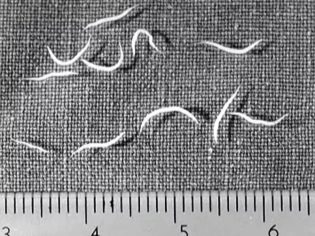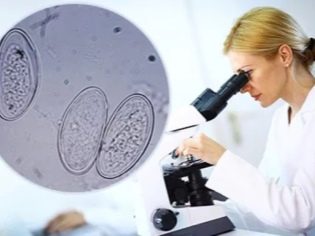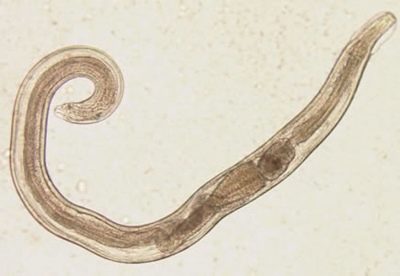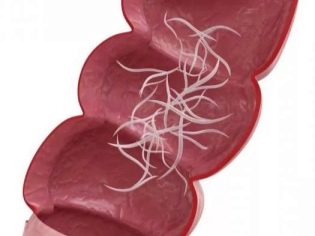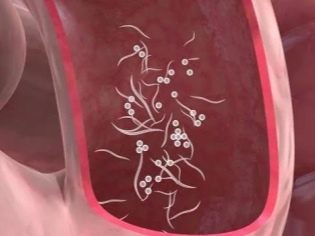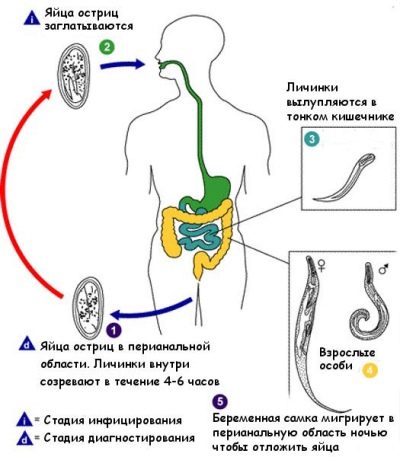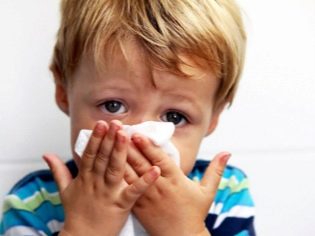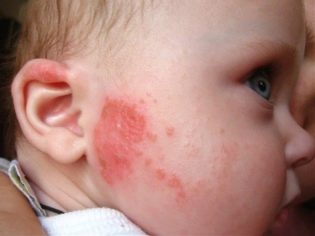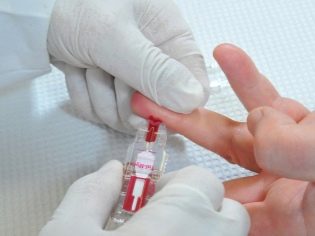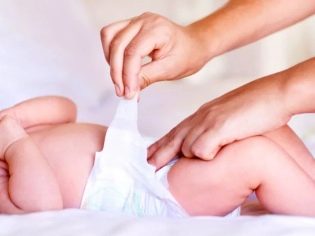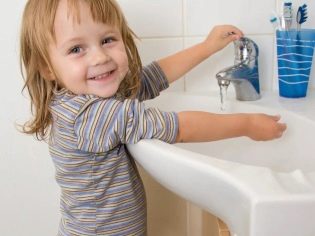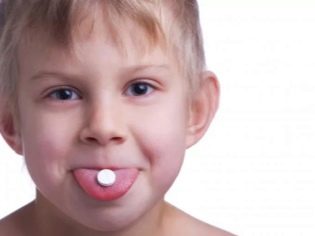Enterobiasis in children
Worm diseases are very common in pediatric practice. Every day district pediatricians consult hundreds of babies who come to them for an appointment with this problem. Many parents have to think how to cope with children enterobiasis.
What it is?
Enterobiasis is one of the helminthic diseases. It manifests itself as inflammation in the intestines, and is also accompanied by numerous adverse symptoms caused by the parasites' habitation in the gastrointestinal tract. This pathology is widespread throughout the world. Anyone can become infected with enterobiasis, but children are more likely to get sick.
The incidence rates are higher in those geographic settlements where more people live. A large population and dense concentration of residence affect the rate of transmission of infection from a sick child to a healthy one.
Scientists have conducted numerous studies and concluded that the level of social development of the state does not greatly affect the incidence of enterobiasis in children. Cases of infection with this helminthic disease are found both in economically developed countries and in developing ones.
Usually, among all the diseases caused by helminths, the proportion of enterobiosis is 75%. Every year this value changes. However, there has been no significant reduction in the incidence for many decades. Organized children's groups have more cases of infection with enterobiasis. Toddlers attending kindergarten or other preschool institutions can get sick quite easily.
The reasons
The cause of this disease is a parasite worm. In medicine, such biological specimens are called helminths, and their entry into the body is called invasion. This helminthic pathology is caused by pinworms or Enterobius vermicularis. Found these pathogens at the end of the XVIII century.
The name of the helminth is constructed from two words, which, when literally translated, mean “inner life”. This name can not be called random. It denotes the essence of the vital organization of the helminth.
In appearance, these worms resemble a spindle. The shape of their body is streamlined. Usually they are white or milky. The outer or cuticular membrane of the worm has a pronounced transverse striation.
The length of the body of this "guest" may be different. Usually it depends on the sex of the helminth. A sexually mature female, capable of breeding, usually reaches one centimeter in size. The body length of the male, as a rule, does not exceed 4-5 mm. It is possible to distinguish between different individuals not only in size, but also in terms of the structure of the tail end of the body. In females, the “tail” is sharp, while in males it is blunt and slightly rounded.
The helminth has special grooves on each side of the body. They run along the entire body of the intestinal parasite, and form two head vesicles to the head.
The main anatomical feature of this helminth is the structure of the digestive system. It includes an oral opening with several lips, a long esophagus that expands in the area of the tail end and forms the anus. Anatomical formations located on the head end of the body, form a special suction apparatus. It is with its help that the helminth perfectly attaches to the intestinal walls of a person.
The organization of the internal structure of helminths is quite complicated. Another feature is the structure of the reproductive system.Females and males have organs that are responsible for further reproduction. This feature of the worms causes their fairly rapid development and the active formation of eggs. Females lay more eggs.
Pinworm eggs usually do not exceed 50 mm in size. They can be somewhat oblong or asymmetric in shape. From above, they are covered with a fairly dense two-layer contour shell that protects them from various adverse environmental influences. In the course of their lives, female pinworms lay a large number of eggs. This physiological peculiarity of their life cycle influences the peculiarity of prescription of therapy in the future.
Favorite habitats of pinworms are considered the lower section of the small intestine and the upper sections of the colon. Usually pinworms live in the area of the appendix, as well as in the cecum.
Usually females live there. After reproduction, males are most often excreted from the intestine along with feces. Parasitologists say that helminths feed on intestinal contents.
The number of parasites living in the intestines can be enormous. On average - from a few hundred to a thousand individuals. A clinical case was officially registered when doctors discovered more than 2500 pinworms in a child. Usually such a huge number of worms appears with repeated self-infection.
A person can become infected by swallowing worms eggs. Usually, they contain sexually mature larvae. Helminths that have entered the children's body easily reach the organs of the gastrointestinal tract and are deposited in the intestine.
As a result of digestion, a huge number of different types of enzymes are released. They have a damaging effect on the outer shells of pinworms, freeing them for life. Then the worms go through several molts and become fully mature.
It should be noted that the release of eggs occurs in the lower sections of the large intestine. To do this, the females descend down - along the intestine. The selection of eggs and their active growth to the larvae are already in the rectum.
To release eggs, a mature female needs oxygen. It crawls out of the anal passage of a person and into his perianal folds.
This usually happens at night when the human body is more relaxed. There are cases when pinworms move throughout the anogenital zone. This leads to the fact that they can crawl into the adjacent anatomical areas. Single cases of detection of worms - in the peritoneum. After completion of the life cycle of the female, she dies and turns into a small bright lump.
The peculiarity of the development of pinworms is also that they do not need any specific conditions of existence for active growth. They can cause infection in people living in northern countries and cities, as well as in southerners. The worse with hygienic knowledge, the more often people get sick. Severe cases of the disease are largely associated with self-infection. For the treatment of enterobiosis it is very important to observe all the rules of personal hygiene.
The main effect of helminths on the child's body is the weakening of the immune defense.
Long (even light) helminthiasis contributes to the appearance of signs of immunodeficiency in a child. Children with helminthic pathology are susceptible to any infection and have a high risk of acquiring chronic diseases of the gastrointestinal tract. Children usually get sick with enterobiasis 3-4 times more often than adults. This is largely due to being in organized teams and low hygienic education.
Helminthiasis is rightly considered the disease of "dirty hands". Usually, self-infection occurs when the child combs the anal area. Mature female pinworms, which reach the anogenital zone during the laying of eggs, contribute to increased itching in this place.The child combs the damaged areas of the skin, which leads to eggs falling under the nails. Small children usually pull their hands in their mouths, which contributes to multiple auto-infection.
The spread of helminthiasis can be a contact-household method. Sick kids, attending kindergarten, become sources of infection for healthy peers. Violation of the rules of personal hygiene contributes to the fact that the eggs of worms are on various toys, furniture, as well as on objects of general use. Enterobiasis in organized children's groups, where the kids spend a large amount of time, are quite common.
It is important to note that pinworm eggs can remain viable long enough. At a temperature of +20 degrees, they usually persist for a month. Only adverse environmental conditions lead to their damage. Cooling to -20 degrees leads to the death of the parasites within one hour. Heating to 50-60 degrees contribute to the death of pinworm eggs in a few seconds.
Symptoms
Clinical manifestations of enterobiasis are very different. There are common symptoms that occur in all babies. However, there may be individual characteristics. Usually they are found in children who have a tendency to develop allergic reactions. The severity of adverse symptoms of the disease depends on the initial state of the child, it can be different in intensity.
The incubation period of the first pinworm infection is usually a couple of days. This time is enough for parasites to start the cycle of life development. The acute phase of enterobiasis is usually 5-6 days. The chronic phase depends directly on the life cycle of the parasite and the number of cases of self-infection. Most often - from one to two months.
Clinical manifestations of enterobiasis in children are:
- Itching. It can be different in intensity and even quite unbearable. This leads to the fact that sick kids begin to actively comb the anal zone. Usually, itching increases at night, due to the peculiarity of the activity of helminths. This contributes to sleep disturbance and frequent toilet trips.
- Stomach ache. Usually, babies feel nagging or tingling pains. Some children have tenesmus - false desires to go to the toilet. Soreness is usually localized in the right half of the abdomen, which mimics a similar symptom of appendicitis. In some young patients, no pain syndrome in the abdominal cavity during enterobiasis occurs.
- Neurological symptoms. The toxic effect of the waste products of helminths has a pronounced adverse effect on many internal organs, including the nervous system. A sick child has a headache, weakness increases, concentration of attention decreases, and nervousness appears. Schoolchildren with signs of enterobiosis begin to study worse at school, lag behind the school curriculum.
- Restriction of social contacts. A sick child wants to limit his personal space from strangers. This is manifested by the fact that he becomes more withdrawn and silent. Often, finding a home and limiting social interactions brings a feeling of well-being to the kid.
- Disruption of the bowel. Long-term enterobiosis leads to the fact that the child appears signs of functional disorders of the small or large intestine. As a rule, they are manifested by flatulence and various problems with excretion of feces. They can be expressed as constipation or diarrhea.
- Mood change. Kids become more whiny and capricious. Even a minor excuse can cause them to display turbulent emotions. Infants may refuse breastfeeding.
- Skin rashes. Usually their appearance is due to the toxic effects of the waste products of helminths.Getting into the systemic circulation, these substances cause the child numerous allergic manifestations. If the kid has a tendency to allergiesthen the severity of adverse changes is very significant. The most common skin symptoms of enterobiosis are various dermatoses, dermatitis and eczema.
- Reduced immunity. Usually this is manifested by a strong susceptibility of the baby to various infectious pathologies. If you focus on the statistics, it can be noted that children with persistent enterobiasis and multiple cases of self-infection, suffer from colds and respiratory diseases much more often than their peers.
Signs in infants
Enterobiasis in infants occurs in almost the same way as in older children. Newborn babies can also become infected. If the baby has signs of immunodeficiency, the disease is quite bright, and the adverse symptoms are extremely severe. Usually, the disease is detected by moms on their own - during the hygiene procedures.
Diagnosis of enterobiasis in infants is the same as in older children.
Feature - the choice of treatment. For very young patients, individual treatment regimens are selected, and the dosages of drugs for eliminating worms from the body are reduced, taking into account the age and body weight of the child.
Diagnostics
Identifying enterobiasis at home is often quite simple. Usually parents notice worms during hygiene procedures. Older children can see helminth on their own. Difficulties diagnosis of the disease usually does not cause.
For accurate diagnosis, several additional laboratory tests are performed. They allow you to verify the presence of pinworms in the children's body. In the general analysis of blood, leukocytosis appears (the number of leukocytes increases) and the ESR is significantly accelerated. To identify pinworms, different scrapings from the perianal zone are needed.
Material collection and inspection
There are several effective ways to detect the disease - using a fingerprint and by scraping. Graham's method (imprinted on adhesive tape) is carried out three times - at intervals of a week.
Usually, biological material is collected before the morning procedures. The effectiveness of this method is up to 95%.
Collect material for scraping can be a special spatula or swab on a match dipped in a solution of glycerin or soda. Then, in the laboratory, an examination is carried out, the eggs of helminths are detected, and in some cases even the remains of mature specimens of worms. The accuracy of the result is also quite high.
Complications
Usually the disease proceeds without the appearance of negative consequences, however there are exceptions. In weakened children and children who have pronounced immunodeficiency states and concomitant chronic diseases of internal organs, complications can occur. These include various proctitis and paraproctitis, chronic colitis, worm appendicitis, allergic eczema and dermatosis.
Treatment
One of the main conditions for the cure of enterobiosis is the prevention of any cases of re-infection. This requires sufficiently strict preventive methods that are required even for the smallest patients. It is important to note that the rules should be observed not only for sick children, but also for everyone who is close to them - in terms of the epidemiological focus of infection.
Some doctors claim that all family members should be treated with antihelminthic drugs.
Experts believe that this contributes to a significant reduction in the number of cases of intra-family outbreaks of helminth disease.
Medications for enterobiosis can also cause side reactions.To reduce such manifestations, the selection of a treatment regimen is carried out strictly individually - taking into account the age of the child, his weight, and the presence of concomitant diseases.
The following measures are used to treat the disease:
- Hygiene rules. All sick children must wash their hands often - especially after active games on the street and hiking in public places, before and after meals and visiting the toilet room. Observance of these important hygienic rules must be followed by parents.
- Wearing closed underwear. Children's panties must be washed in hot water (using laundry detergent), they should be ironed with a very hot iron before wearing. In the same way you need to handle bedding baby.
Forget about ironing is not worth it! Pinworm eggs can die only after processing at very high temperatures.
- Required daily washout. Anogenital zone should be washed twice a day - using baby soap. In its composition there should not be any aggressive chemical fragrances that can only increase the allergic manifestations on the tender skin of the child.
- Daily change of bed and underwear. During all periods of illness it is very important to observe this rule. This will help prevent possible cases of repeated infections. If there are several babies in the family, then only individual sets of clothes should be used for each child. To use someone else's things (even processed by an iron) is prohibited.
- Drug therapy. Usually, the following drugs are used to eliminate pinworms: "Pirantel", "Vermox, Piperazin, Medamin and others. The dosage and treatment regimen depend on the age of the child and are determined based on the weight of his body. To prevent pinworms from spreading all over the anogenital area, you can use a cotton swab dipped in petroleum jelly. For girls, this simple measure helps to cope with crawling pinworms in the vagina.
Prevention
Diseases of "dirty" hands can be prevented only if all the preventive rules are followed. Regular hand washing, wearing clean underwear helps reduce the risk of pinworm infection.
After finding a sick child in kindergarten, quarantine is established. Compliance with this necessary preventive measure contributes to a significant reduction in the incidence of enterobiasis. Observe such rules should be throughout life.
About what is enterobiosis in children, see the following video.
